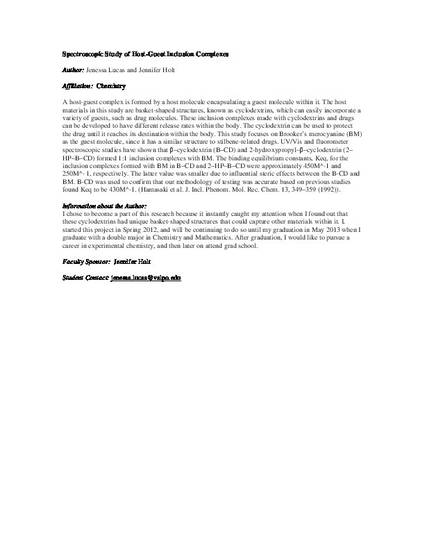
A host-guest complex is formed by a host molecule encapsulating a guest molecule within it. The host materials in this study are basket-shaped structures, known as cyclodextrins, which can easily incorporate a variety of guests, such as drug molecules. These inclusion complexes made with cyclodextrins and drugs can be developed to have different release rates within the body. The cyclodextrin can be used to protect the drug until it reaches its destination within the body. This study focuses on Brooker’s merocyanine (BM) as the guest molecule, since it has a similar structure to stilbene-related drugs. UV/Vis and fluorometer spectroscopic studies have shown that β–cyclodextrin (B–CD) and 2-hydroxypropyl–β–cyclodextrin (2–HP–B–CD) formed 1:1 inclusion complexes with BM. The binding equilibrium constants, Keq, for the inclusion complexes formed with BM in B–CD and 2–HP–B–CD were approximately 450M^-1 and 250M^- 1, respectively. The latter value was smaller due to influential steric effects between the B-CD and BM. B-CD was used to confirm that our methodology of testing was accurate based on previous studies found Keq to be 430M^-1. (Hamasaki et al. J. Incl. Phenom. Mol. Rec. Chem. 13, 349–359 (1992)).
Available at: http://works.bepress.com/jennifer_holt/1/

Link is to abstract only.